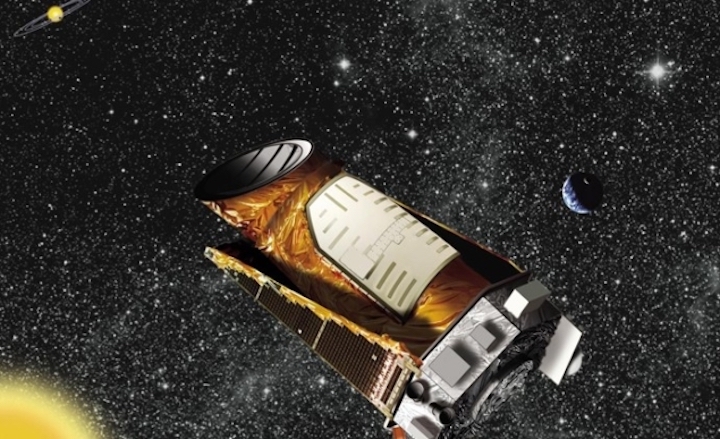23.07.2020

Some red-giant stars are rotating much faster than previously thought, according to a study led by Patrick Gaulme at Germany’s Max Planck Institute for Solar System Research. Using NASA’s Kepler space telescope, the astronomers found that about 8% of the red giants they observed are rotating fast enough to display starspots. The team reckons that the elderly stars acquire their rapid rotation by following one of three distinct routes in their evolution.
In main sequence stars like the Sun, the complex interplay that occurs between stellar rotation and the motions of plasma creates incredibly lively magnetic fields. When this magnetic activity is particularly strong, upwelling plumes of plasma in a star’s convective outer layers can be blocked, producing dark patches on its surface. To an observer on Earth, these starspots cause a periodic variation in the star’s brightness as it rotates, bringing the spots in and out of our field of view.
Until recently, starspots were not thought to be present on red giant surfaces. Since these older stars expand rapidly as they move out of the main sequence, while maintaining their angular momentum, previous theories had predicted that they must rotate more slowly than main sequence stars. Slower rotation should reduce magnetic activity, preventing starspots from forming.
Periodic brightness variations
Gaulme’s team tested this idea by analysing a sample of around 4500 red giants, gathered by Kepler between 2009 and 2013. In contrast to previous theories, they found that 370 of the stars – around 8% of them – displayed periodic brightness variations that could only be explained by starspots passing across their surfaces.
Some recent studies have suggested that red giant starspots could appear in binary systems – in which a red giant can acquire angular momentum from its companion star until their rotations are synchronized. This was indeed the case for some of the observed red giants, but this still only accounted for 15% of the spotty stars analysed by the team.
Engulfing planets
By following the clues offered by their oscillations, Gaulme and colleagues concluded that the remainder of the red giants fell into two groups. The first included stars with similar masses to the Sun, and the team believes these red giants acquired angular momentum as they engulfed orbiting planets and binary companions during their expansion.
In contrast, more massive stars in the second group displayed lower magnetic activity during their time as main sequence stars. Their quieter environments prevented material from escaping, allowing the stars to retain angular momentum. Therefore, despite slightly slowing down during their evolution, these stars still preserved enough magnetic activity to display spots after becoming red giants.
The team now hopes to improve their understanding further using ESA’s PLATO mission, which is scheduled to launch in 2026.
Quelle: Physics World

